Advertisement
The original immersive Van Gogh exhibit opens in Boston
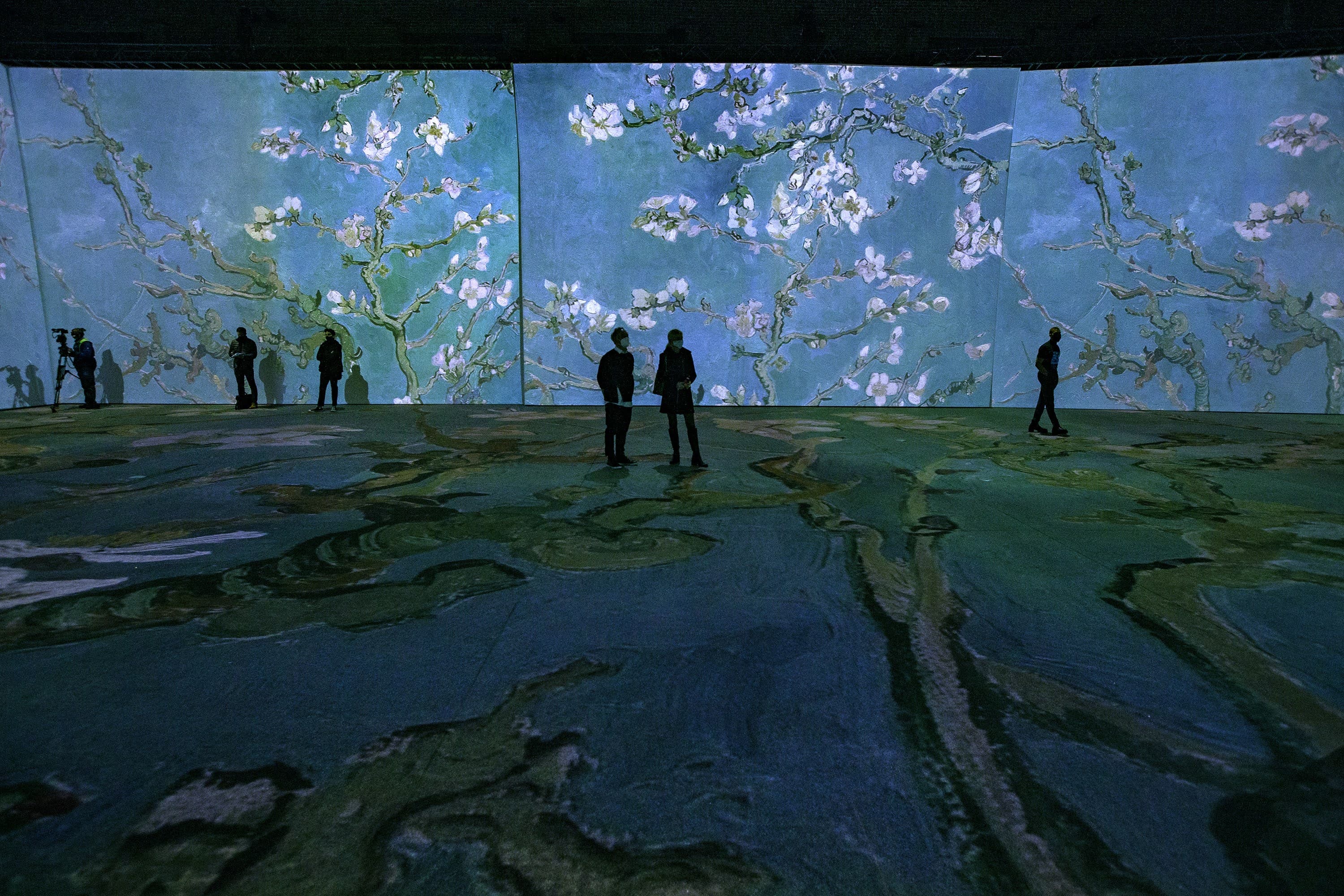
He’s hot, he’s sexy and he’s dead.
That was the infamous Rolling Stone cover tag line on Jim Morrison in 1981, a decade after the Doors singer drunkenly drowned in a Paris bathtub.
Forty years later, might the same cheeky phrasing apply to Vincent van Gogh, gone from us now 131 years?
“It is such a punchline, using present verbs for someone who passed away. I like it,” says Annabelle Mauger. Mauger is the Lyon, France-based artistic director of “Imagine Van Gogh the Original Immersive Exhibition in Image Totale,” an exhibit up and running now through March 19 at the SoWa Power Station in Boston.
But, Mauger says, “Jim Morrison’s life was different from Vincent van Gogh’s. [Morrison] knew success all over the world. Vincent was an unknown painter when he died. Painting was his life, but he couldn’t live off his work. It’s a sad story. This guy was was so poor during his life and now the paintings cost so much. The only common points I see between both of them is how they both had such difficulties in life.”
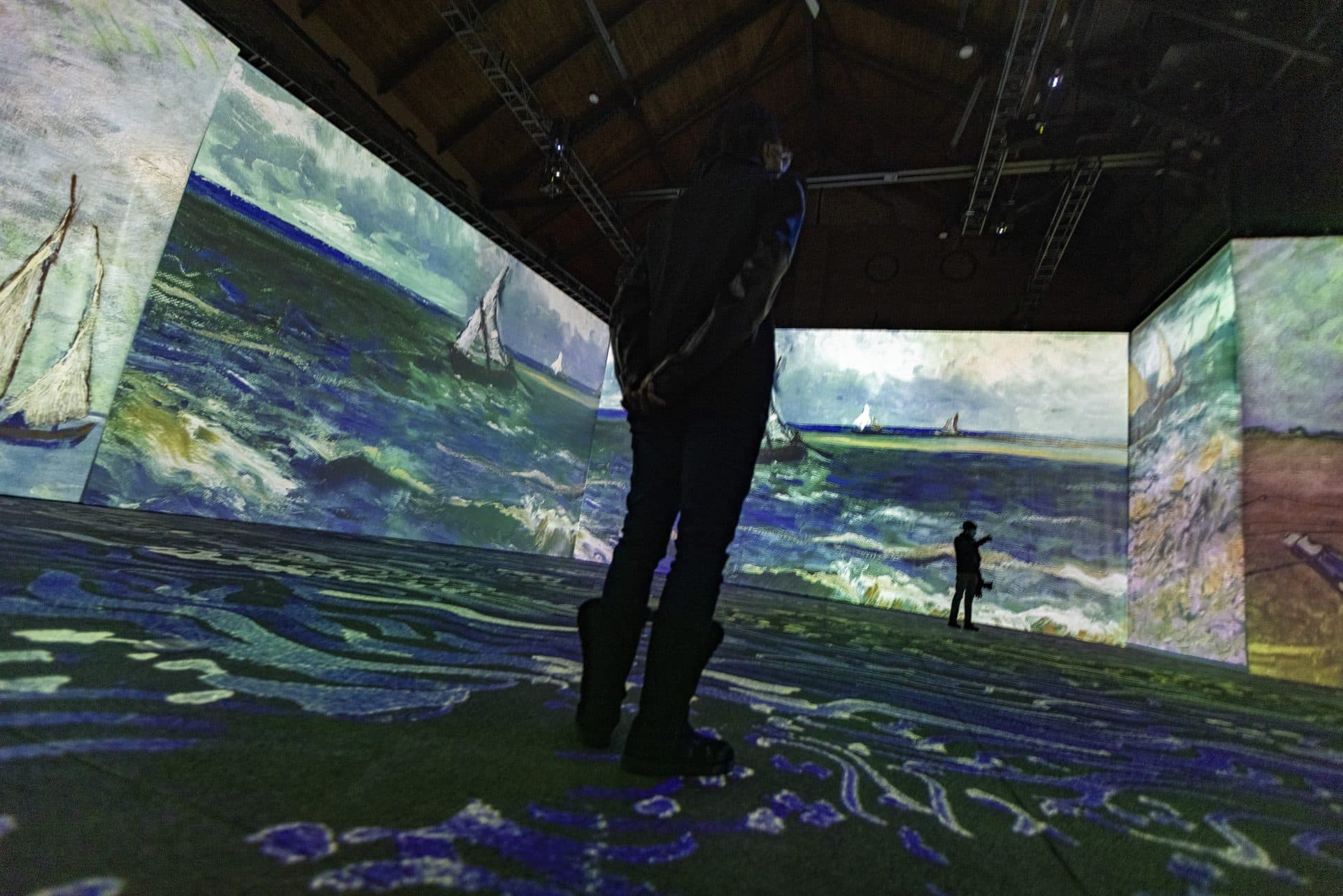
There’s that, yes, but there’s more than that: A history of alcoholism, mental instability and likely bipolarity, death by suicide or willful misadventure — Morrison at 27, Van Gogh at 37 — and, most crucially in this context, a still-extant fan following.
The promotional language for “Imagine Van Gogh” bills the Dutch painter as “the ultimate cult artist.” While he was prolific — almost 900 paintings, some 1,100 drawings and sketches — he was unknown, unable even to trade a wheelbarrow full of his paintings to pay off a debt. During his lifetime, the impressionist sold exactly one painting, “Red Vineyard,” which went for 400 francs in Belgium.
“His painting was revolutionary, but he was not recognized for his talent [during his life],” Mauger says, adding that many people are “used to what you see and it’s sometimes really hard to change your point of view. When your painting is kind of a revolution, it’s hard for the academician to accept it.”
Now, of course, things have changed — “a question of modernity,” as Mauger puts it. His most expensive painting. “Portrait of Dr. Gachet,” was sold for $75 million in 1990, 100 years after its creation. His most famous painting, 1889’s “The Starry Night,” hangs at The Museum of Modern Art in New York and is considered invaluable.
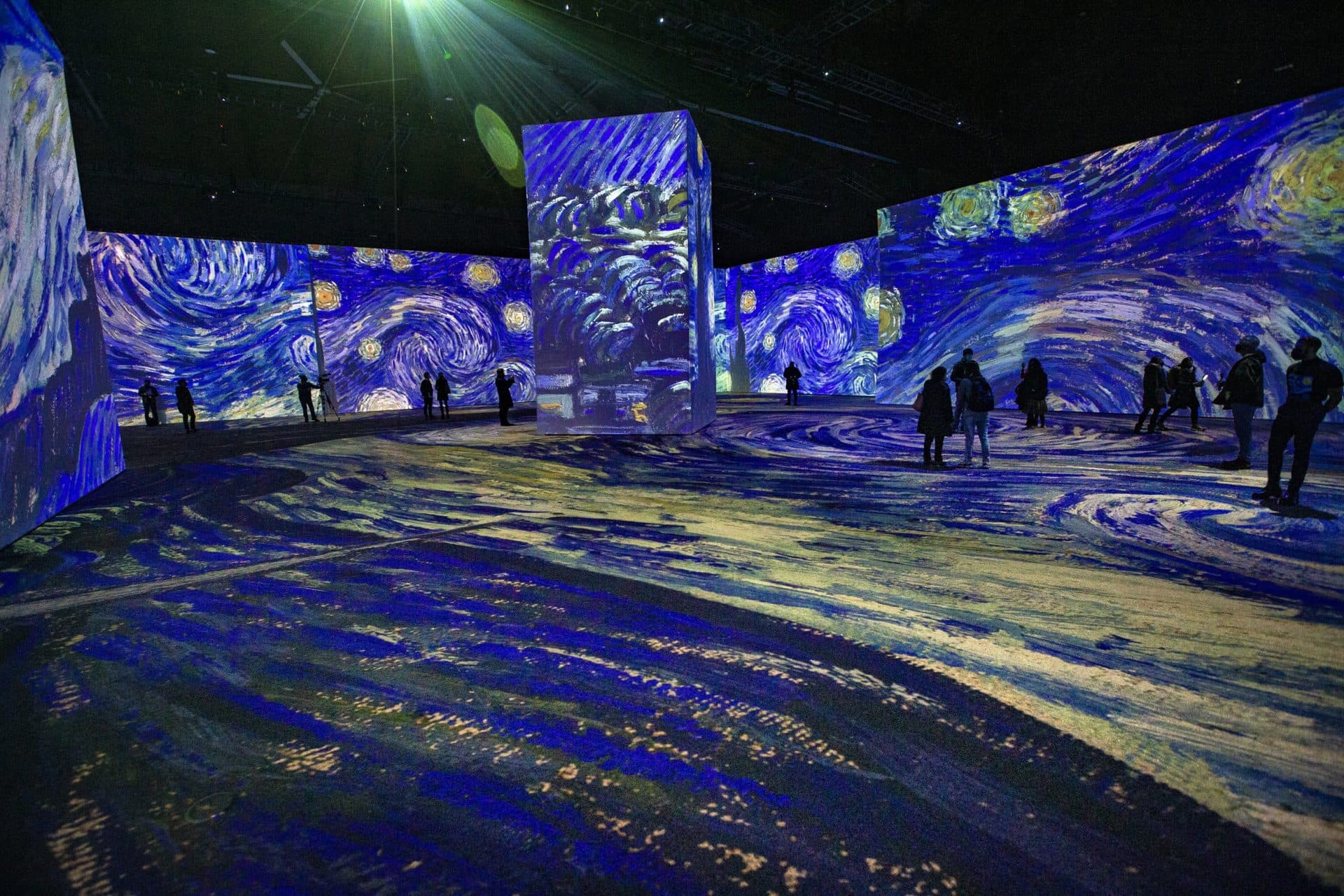
If Van Gogh was indeed the “ultimate cult artist,” one thing that often seems part of the designation is that the artist led a tortured life, where the madness infused the art.
“I am not sure being tortured helps being a cult artist,” Mauger says, on the phone not long after landing in Boston for the installation of the exhibit. “Van Gogh was a great painter. He was painting life with beauty and also a realistic life of hard labor, a floating world of normal people, dreaming like you and me. He wanted to be part of society and critical, too. He was not crazy, he was suffering. As said [French writer] Antonin Artaud in 1947, for the Van Gogh retrospective in Musée de l’Orangerie, this society ‘suicided’ him.”
Mauger says that up close, Van Gogh’s paintings can look violent. “The brushstrokes are so straight, perhaps you have thought he was crazy. In ‘Imagine Van Gogh,’ you will see that when you take a bit of distance, everything is curved, everything is sweet and tender, and this is what we really wanted to show.”
“Imagine Van Gogh” is the second immersive Van Gogh show in Boston, the other being “Van Gogh: The Immersive Experience," which opened in October and is running through Feb. 20 at the Strand Theatre.
“Imagine Van Gogh” was first out of the gate, staged by Mauger and co-director Julien Baron, and shown in 2008 at Cathedrale d’Images in Provence, France. Variations of that show have traveled the world, most recently through Canada. Boston is its U.S. debut.
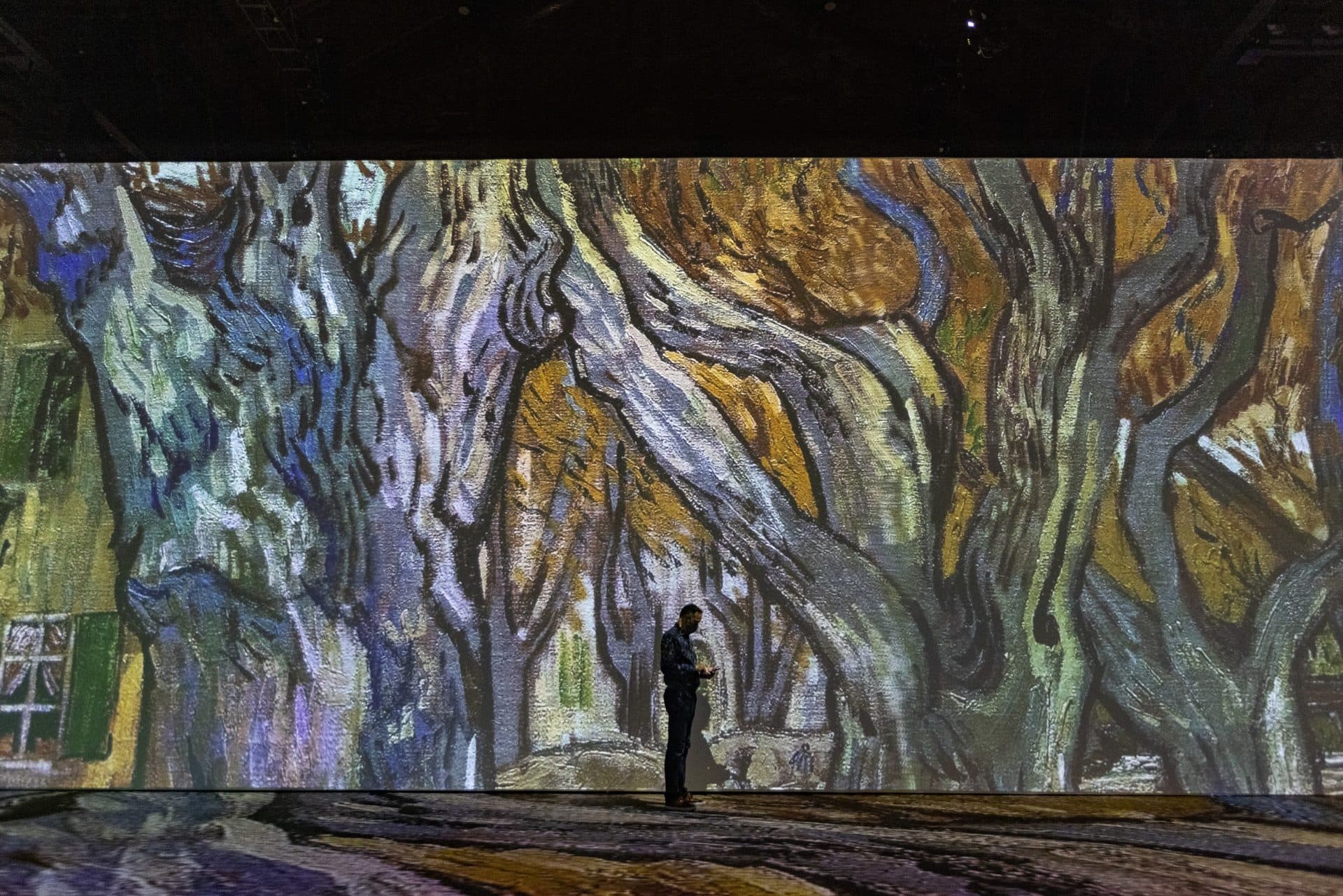
“I’m the mother of immersive exhibitions,” Mauger says. “I’ve been copied so many times.” Of the dueling immersive exhibits in Boston, she is semi-diplomatic: “It’s not bad. There is space for both,” though she adds the artificially enhanced sense of movement in the paintings in the other exhibit is “unconscionable. I can’t do that. To me, a painting is an expression of the movement decided by the painter.”
It may not shock you to hear some museum directors and art critics have not heartily endorsed immersive exhibits. (See these examples from Minnesota’s Star Tribune, The Boston Globe and Wall Street Journal.)
Mauger can live with that. She thinks people should go to museums to see the original paintings and calls her exhibit “an introduction to discover the world of Van Gogh. Here, you can jump, you can run, you can sing, you do what you want.” At a museum, she adds, paintings are usually placed too high for children to see and quiet contemplation is expected of visitors.
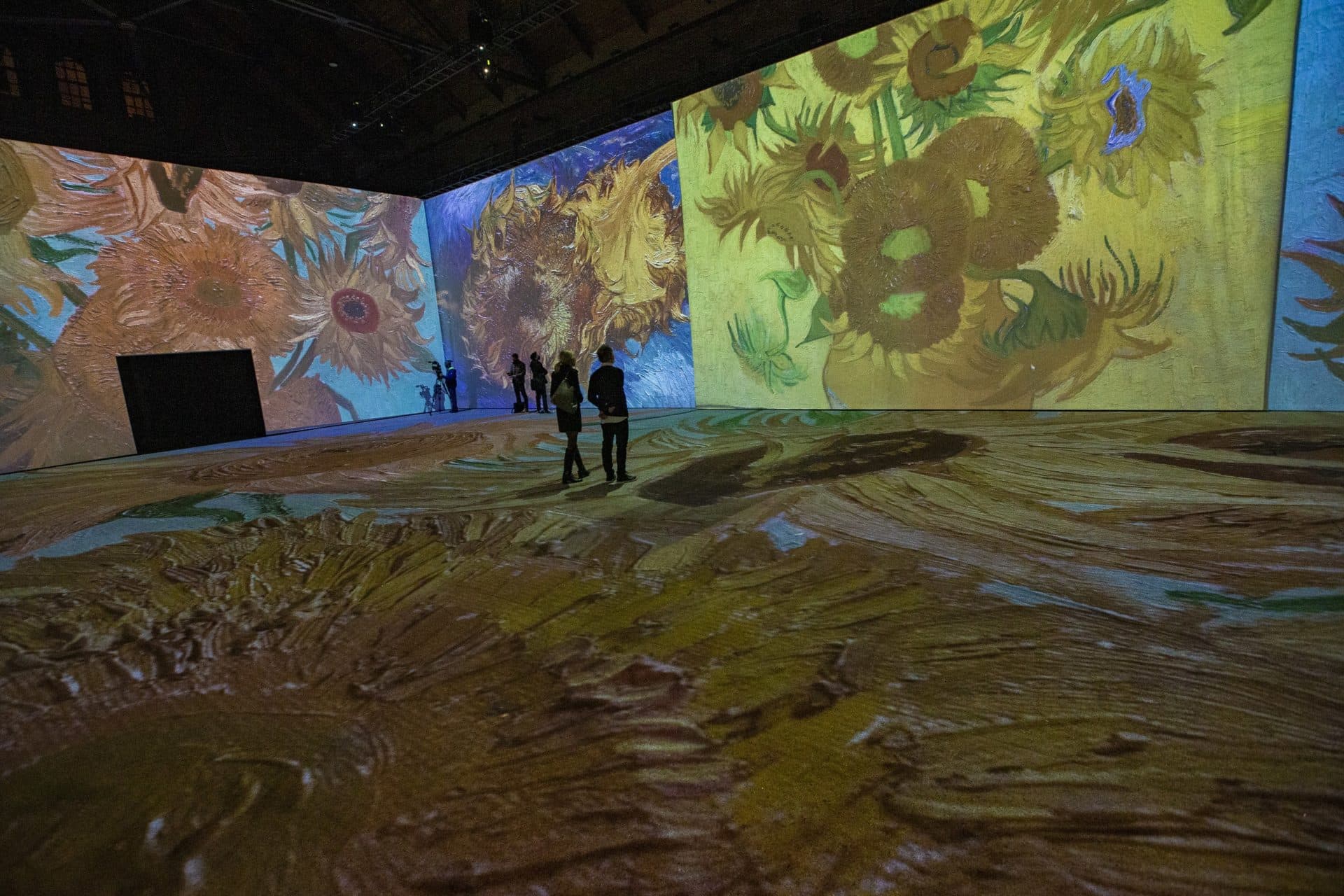
Admission to “Imagine Van Gogh” is on the hour and the 200 paintings — and some period photographs — cycle through a graceful, gradual, 45-minute trip. (“The Starry Night” comes around the middle.) It’s not for the TikTok devotee. There is 24,000 square feet of space in which to roam, and you’re surrounded on all sides by massive slabs of Van Gogh works — his own visage, his flowers, his boats, his villages and his villagers — with an obelisk at the center.
Mauger considers “Imagine Van Gogh” as “an environmental dialogue. When you talk, you use many words; you’re not repeating the same word. It is the same with pictures; if you want to immerge your visitors with a credible and artistic message, you need many pictures.”
Baron, the show’s technical director, utilizes 50 high-definition video projections, so that a detail that may be four centimeters on Van Gogh’s canvas could be five meters high.
Classical music is integral to the presentation, and it enhances the transportation factor immensely. “In our position, music and art are so important,” says Mauger. “You can go to the exhibition whatever your age, whatever your culture, whatever your language, and music is one medium for people to hear the paintings.”
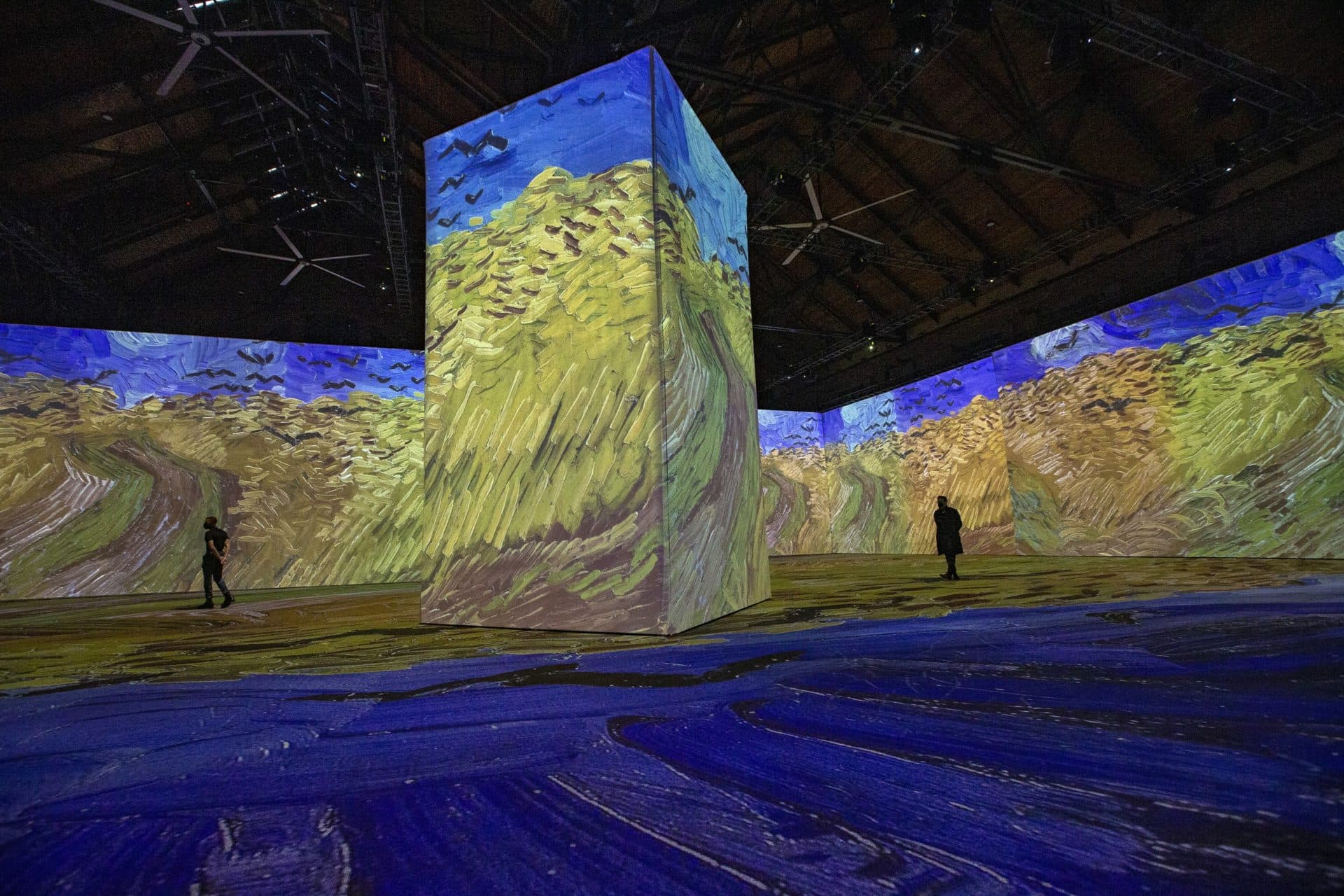
The first music you hear is Prokofiev’s Romeo and Juliet - Dance of the Knights. Says Mauger: “This tragic music movement can help you understand, first that in an immersive exhibit the frames are banished to let details appear and, secondly, [to show] how tragic life could be when you decide to assume your choice — like being a painter.”
Tragic, yet resplendent. Approach the towering projections and you can almost feel the texture of the paint. You’re in his world, his story. Long ago, but timeless. “Imagine Van Gogh” is a respite, an opportunity to exit the troubles of today for a short spell.
It would appear also to be relatively safe-ish in the new omicron world. Masks are required, as dictated by the city of Boston, and capacity is limited to 175 for each cycle. As of Jan. 15, proof of vaccination will also be required.
